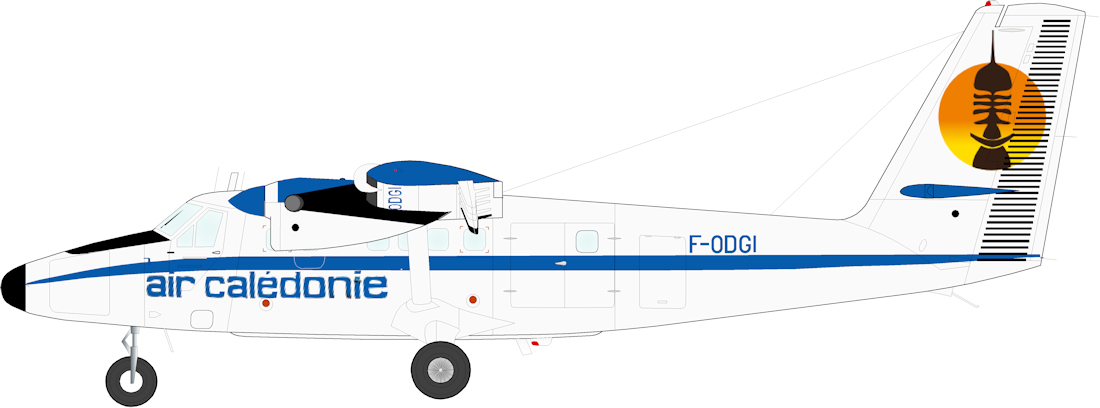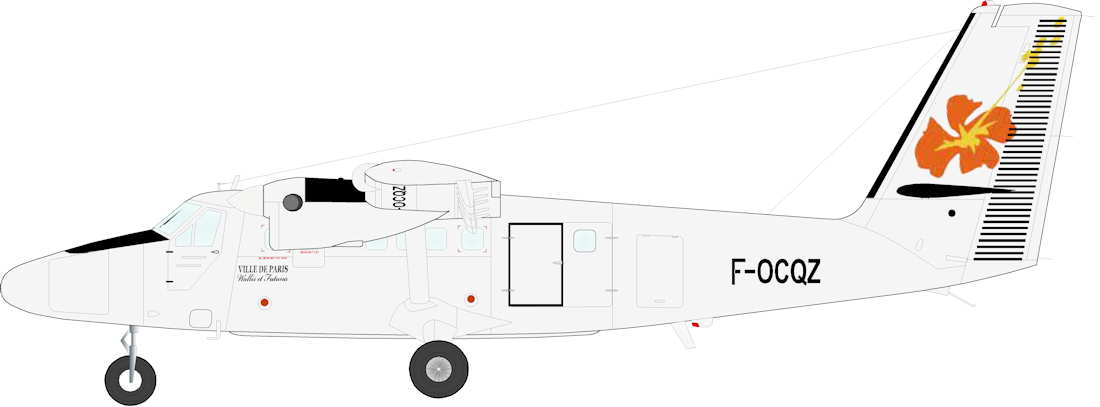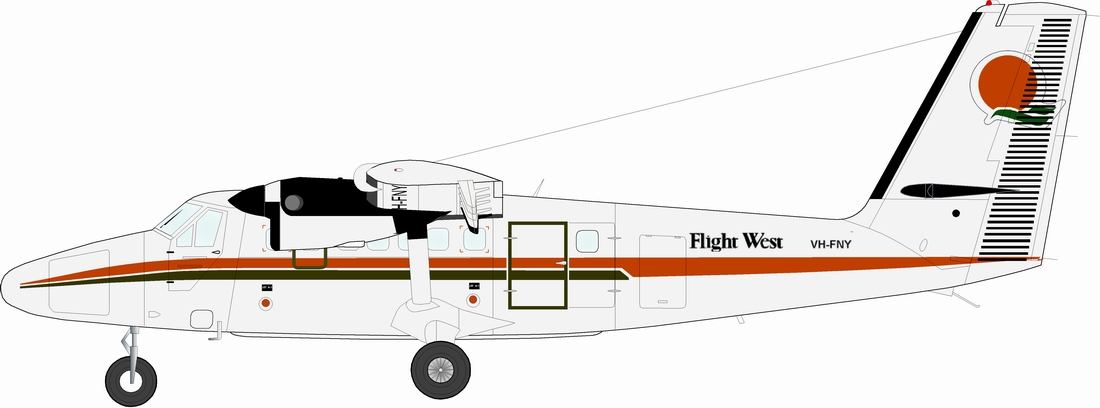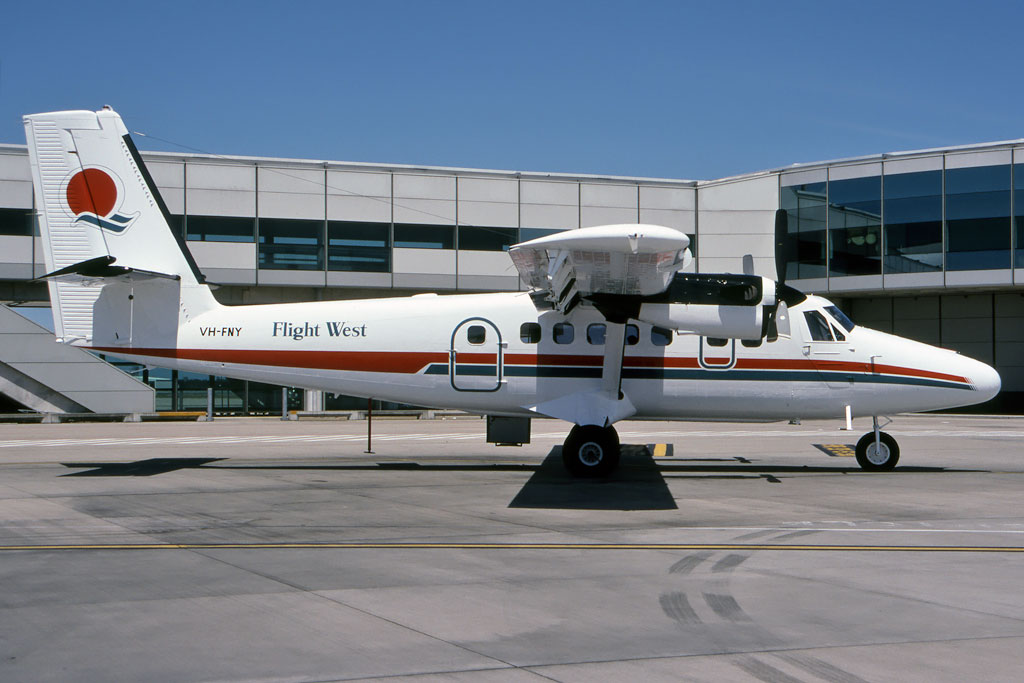
Twin Otter F-ODGI from Air Caledonie. Photographer Unknown.
by Steve Mackenzie

In my opinion one of the nicest looking civil types around is the De Havilland Canada DHC-6 Twin Otter' turbo prop commuter a/c. This type has appeared in hundreds of colour schemes around the world and would make a fine addition to any model collection. As I have mentioned in the last couple of editorials, the intention is to present some more Twotter material based on photos of airframes that have been operated in our local region (Aust, Pacific, New Guinea etc). There have been probably thousands of schemes applied to this type world wide since they first went into service in the 60s as many airframes have been passed down from one operator to another over the years. Although many of these schemes were very nice, I will in general restrict things to aircraft that are more relevant to our status as an Aussie based mag.
One area to closely look at in photos of these aircraft and the accompanying drawings is the aerial fit which varies enormously between different operators and in some cases individual machines in the same company. Another thing to watch for (although it does not apply to any of the aircraft drawn here) is that some machines have an additional window in the airstair door on the port side. If necessary you will have to cut and glaze a window to match.
Although quite a few of the overseas Twin Otters can be seen in very colourful overall paint schemes, the local machines (from Australia and our Pacific neighbours) appear to mostly be in Gloss White with coloured cheat lines etc added. Most companies have some sort of Gloss Black area around the engine nacelles and sometimes the horizontal tail surfaces also to hide the exhaust stain. This varies between operators and the drawings should be observed carefully. Some machines carry deicing boots on the leading edges of wings and tailplanes ( this can be either Black or a light buff colour).
So onto some additional schemes which I have not presented before in previous issues. Do not worry I have many more...
Steve Mackenzie
Societe Caledonienne de Transports Aeriens, trading as Air Caledonie (Air Caledonia in English) is the domestic airline of the French collective of New Caledonia. Originally created in 1954 as Transpac, it has operated Twin Otters since 1968. The company is split into two entities, Air Caledonie which operates the domestic services (currently operating four ATR-72 airframes but it originally used Twin Otters in a number of different schemes) and Aircalin (Air Caledonie International which operates international routes) for which two Twotters are used to supply an Air service between the Wallis et Futuna Islands (which are a separate entity to New Caledonia) under a long running contract (the current 5 year contract runs till 2023). F-ODGI as drawn is in a fairly recent scheme as the tail markings are the same as currently used on the ATR-72s. But I have images of at least four (!) previous schemes that I hope to draw later.

I mentioned last issue that I have an image of of their Twotters in a different later scheme, using a simpler, more artistic style of the above tail markings. My drawing is of F-OCQZ (again !), but F-OIAQ which was originally the 2nd Aircalin airframe and F-OVEA ( a brand new series 400) which replaced it in 2018 have been seen in similar schemes with the usual small differences.


Flight West was formed in 1987 taking over some of the assets of Talair (including Twin Otters) and went bust themselves in 2001, some of their assets being taken over by Alliance Airlines in turn. I have photos of VH-FNY, VH-XFC and VH-XFE in their colours with the usual small variations.

